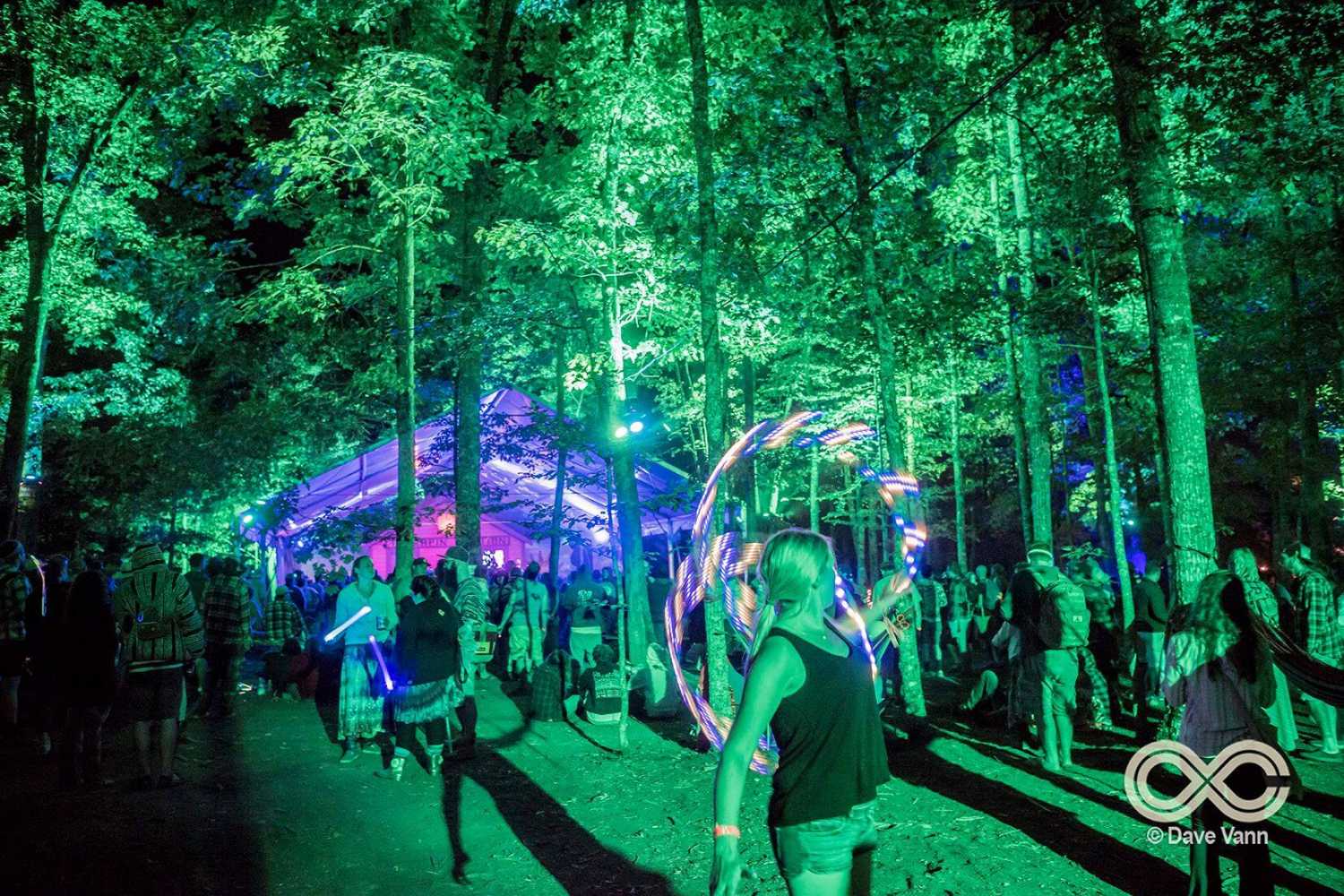SJP creates forest of light with ChamSys
- Details

S. Jeremy Peters turned the thickly wooded ‘Garcia’s Forest’ around Lockin’s Terrapin Station Stage (named after the Grateful Dead’s mystical 1977 album) into a transcendental canopy of colour with 150 pixel-mapped IP65 par fixtures that he controlled with his ChamSys PC Wing and Playback Wing.
Peters, the owner of SJP Productions, hung between three and five lights on over 30 trees in the forest. The glow from these fixtures radiated throughout the woods, colorizing other trees and creating a wonderland around the stage. Using modified hunting stands to set up his rig without harming the trees, he positioned his pars high over the ground. This not only aided in spreading the light, it also kept the fixtures safely out of the reach of festival goers.
The glowing forest provided a colourful backdrop for the music on the stage, which featured a life-sized replica of the Terrapin Station Porch that graced the cover of the Grateful Dead album. Peters lit the stage using only six par fixtures.
“We wanted very minimal stage lighting to keep the ‘porch’ vibe, so we just used a basic front wash and a coloured wash on the tent ceiling,” he explained. “The idea was to make sure the porch façade was well lit, and that the Terrapin theme was easily identifiable, so we stuck mostly to the white front wash and let the trees take the forefront in our lightshow. However, when the music built up and called for something more exciting, we executed effects lighting on stage that was synched with the trees.”
Peters also executed some exciting colour changing sweeps throughout the forest with his pixel-mapped pars. “We programmed every light in the forest to be a single pixel on the map, so that we could do large scale colour wipes in any direction,” he detailed. “Because it was such a large space and because the trees are not in a perfect straight line, we spent many hours making sketches of the forest and analysing them to determine the best grid pattern.
“We also had to take into account which direction the lights were facing and in which order the addresses were assigned on each individual tree,” continued Peters. “The ChamSys built-in pixel mapper and pixel-mapping effects helped us achieve a variety of looks, all beautifully coordinated with each other.”
(Jim Evans)










